The Pivotal Role of Brand in the Post-COVID Office
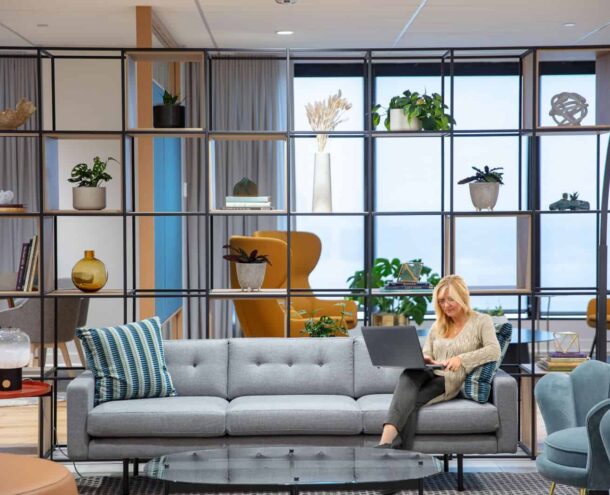
The office is changing
The Covid-19 pandemic completely transformed the way we work. For people in non-essential fields, the office—once a cornerstone of their Monday to Friday routines—effectively disappeared. Lockdowns around the globe turned face-to-face meetings into Zoom calls and kitchen tables into desks, shifting the entire paradigm of work as we knew it.
Now, as vaccinations continue and society returns to a “new” normal, the office is set to become a more regular fixture in employees’ lives once again. But it’s not going back to the way it was. A survey conducted in August 2021 of New York City-based employers, found that 70 percent were planning to or had already begun to adopt a “hybrid” model—allowing their teams to work remotely for part of the week. And five percent said they wouldn’t require employees to return to the office at all.
From driving efficiency…
Though this research was conducted in one city, it’s indicative of an undeniable trend—not just across the country but throughout the world. And it’s created an opportunity to rethink the office and its overarching purpose.
Before the arrival of Covid, the office was designed and operated for efficiency—a place where a company’s staff could do their jobs without distractions. Today, that role has been upended. The past 18 months have shown businesses that their workforce can be just as productive at home as on site—a key reason why so many are keen to embrace the hybrid model.
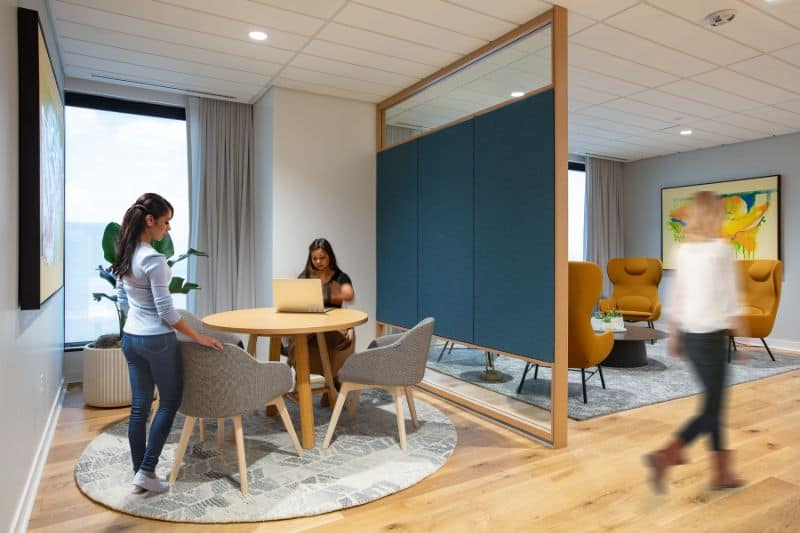
…To elevating community
With fewer individuals physically coming in every day, the office of the future will inevitably take on a more social function: serving as a gathering place and “home-base” for in-person interaction. It may operate as an area for colleagues to brainstorm together or collaborate more easily on a project. It might facilitate deeper connections among coworkers—enabling new hires to meet others for the first time, giving team members a chance to catch up over lunch, or allowing the full company to celebrate special events. Yes, these kinds of activities took place at offices before. But now they’ll be the focal point, as enterprises everywhere strive to foster a feeling of community within their walls.
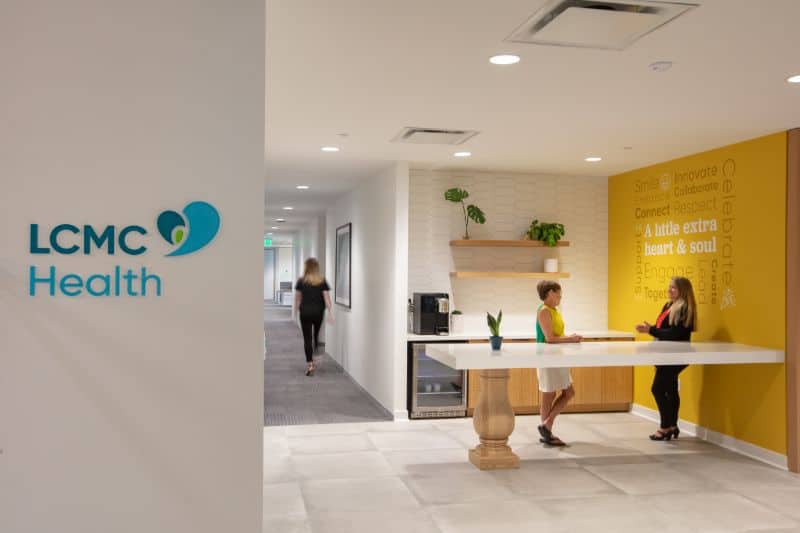
Implications for design—and an opportunity for brand
Of course, this shift in the way we use office space comes with implications for its look and feel, layout, function, and more. Embracing best practices like human-centered design (which infuses empathy into a space by keeping users’ needs top of mind) and biophilic design (which aims to connect people and nature within built environments through features like plants and natural light) is a good starting point. But for an office to truly become even a part-time hub for an enterprise and a magnet for its employees—a setting they visit not merely out of obligation but because they actually want to be there—it also must harness the power of brand.
Learn More: Bringing Brand to Life in Physical Spaces
Real estate that reflects and represents brand
Infusing brand into a space can help bring to life an organization’s core principles—its mission, vision, values, and personality—in a way that feels tangible and tactile for the employees who work there. And doing that can engender a stronger sense of culture across the whole company.
Some businesses, like Lego, were already successfully doing this pre-pandemic. Guided by the imagination and playfulness their products spark in kids, Lego sought to embody those same aspects across its new headquarters in 2019. The result? The building features play areas and team neighborhoods—a mix of individual and collaborative workspaces that amplify Lego’s creative, fun, and caring values. And it’s not alone: businesses like Google, Salesforce, and others have consistently leaned on brand to establish corporate offices that feel not only more harmonious for their people, but also true to their identities.
Anyone can do it
For the Legos and Googles of the world, applying brand to develop inviting, unifying offices might seem like a no-brainer. But what about businesses in traditional industries, where “creativity” and “community” aren’t necessarily front and center? No matter if a company is an innovative, trendy start-up or a legacy name with a more conventional expression—brand can still be leveraged in design to make these spaces more appealing.
Learn More: Integrating Brand Elements into Physical Space to Elevate Experience
After all, there doesn’t have to be an indoor slide or 10 ping-pong tables in your common area to make for an A+ office that your employees enjoy. Let’s say you’re a B2B business insurance provider who has close relationships with your policyholders: maybe you cue that concept of partnership through your furniture selection—by always setting up “pairs” of chairs in areas where you’d normally meet with clients. Or if you’re a financial services firm that’s known for bringing clarity and honesty to your customers, for instance, you may incorporate that sense of transparency in your material and aesthetics—opting for glass conference rooms instead of opaque walls. No matter what kind of company yours is, there’s always inspiration to be found in brand—and ways to leverage it to make your workplace one where everybody wants to be.
LCMC Health
Our client, LCMC Health, is the perfect example. As a healthcare company, LCMC exists in a vertical that can often feel institutional. Its brand, however, is anything but. Centered on the idea of “celebrating the extraordinary in a world of ordinary,” we instilled this mantra within LCMC’s corporate headquarters—because internal branding can be just as critical as the external marketing that customers experience.
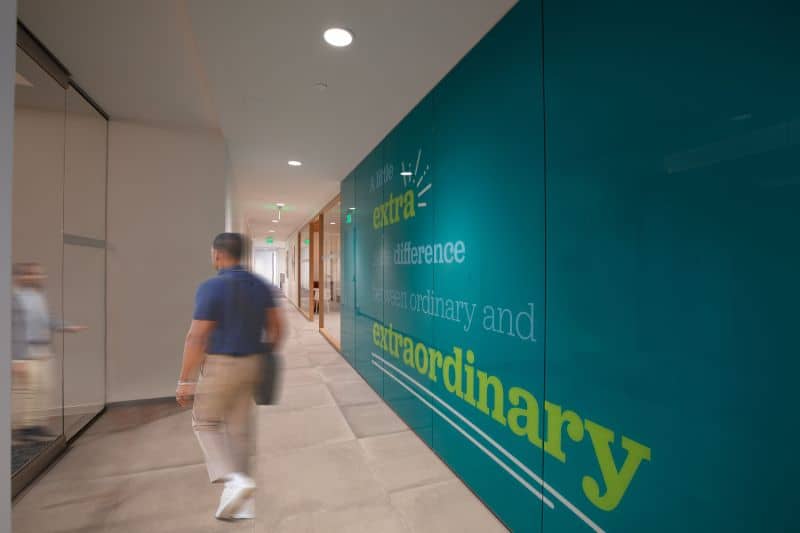
To do this, we leaned into vibrant colors and maximized natural light that made the space warm and open. We mixed and matched décor, pairing together modern and vintage furniture in a way that looked more like a living room than a lobby—all while integrating health and wellness cues through light-colored wood and pops of greenery.
Smaller accents helped us highlight the humanity and originality of LCMC Health in a more literal way. Graphics with positive affirmations, stylized lettering, and cheerful drawings line the walls, creating moments of storytelling around the organization’s hospitals and staff. And we honored the company’s rich New Orleans heritage with artwork that showcases the city, alongside unexpected touches like trombone sconces, for extra little moments of delight.
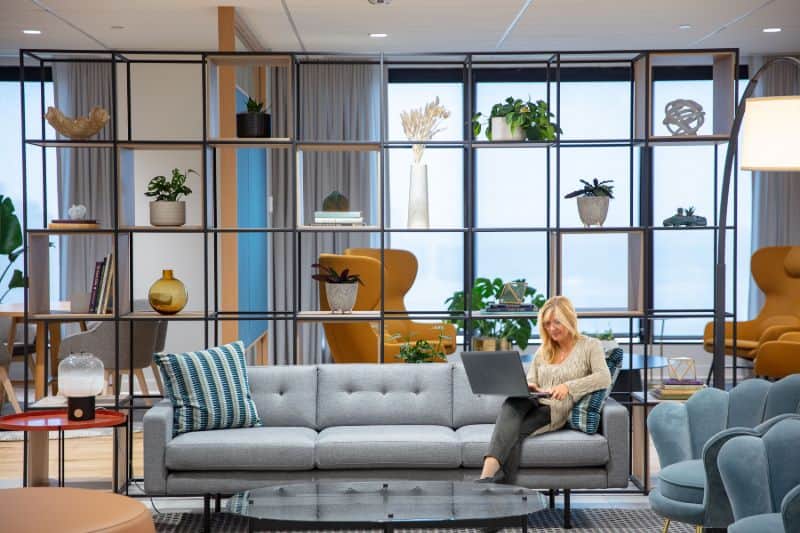
We also reconfigured the shared areas in the office––the lobby, hallways and corridors, and breakrooms––to foster a sense of community, encourage casual interactions, and enable collaboration. And though we implemented this work in the midst of the pandemic, by dialing-up the social functions and experiences these spaces support, we helped LCMC Health better meet the needs of their employees in a post-COVID environment, too.
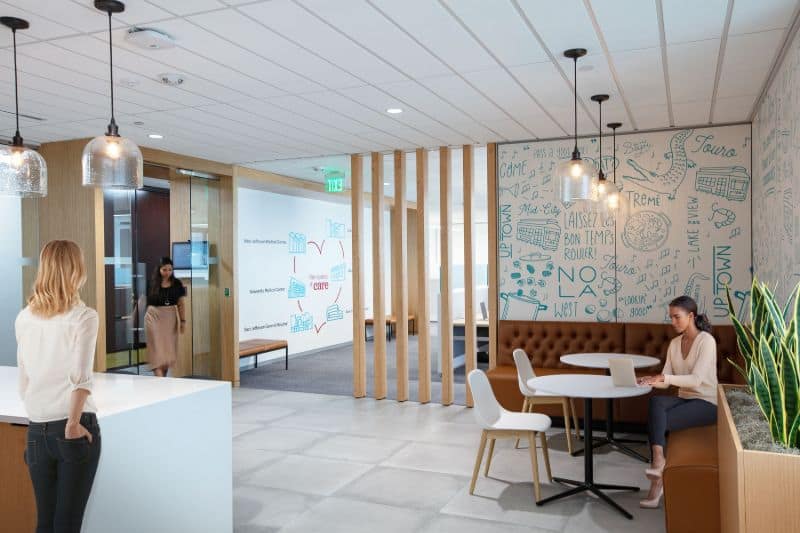
Reimagining the workplace
Ultimately, we designed each area of LCMC’s headquarters to create a sense of belonging and drive a connection with the brand—an approach that enabled us to build a place people are proud to visit every day. Because when brand is seamlessly ingrained into a workplace, it can bring your team together. Cultivate an authentic atmosphere rooted in shared values and culture. And ensure your employees look forward to spending another day in the office.



